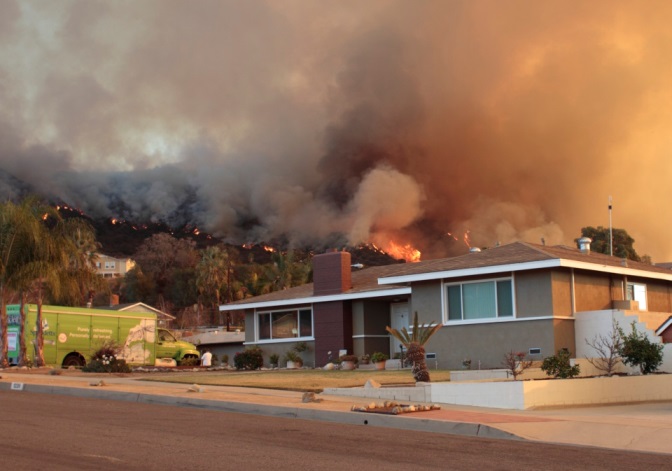Prescribed burns have risen to the top of the most prominent wildland fuel treatments in the world. But while the practice is excellent at reducing fuel loads, it’s been less successful at saving peoples’ homes from the flames.
Research previously published in the Journal of the International Association of Wildland Fire shows that prescribed burns only lessen structure destruction when they’re set close to structures, which adds another layer of careful, costly, and legally challenging coordination of multiple landowners. Depending on the area, relying solely on Rx burns can ultimately be unsustainable and unfeasible as extreme fire weather conditions become more frequent due to human-induced climate change.
Scientists from the University of Tasmania recognized this shortfall and turned to another fire management practice that has received little praise or scientific inquiry: defensible space in the form of gardens.

“Models based on post-fire assessments revealed that garden characteristics, particularly vegetation type and cover near the house, as well as presence of non-vegetative fuels, affect the likelihood of house loss,” the scientific article said. “In one case, they were found to be more important than building characteristics in determining house survival.”
The researchers reviewed defensible space creation guidelines from Africa, Europe, North America, South America, and Oceania to develop key recommended approaches to mitigating multiple fire attack mechanisms, including fuel types, amount, and spatial distribution.
Proper defensible space hinges on its ability to stop radiative and convective energy from crossing a heat threshold and causing a house fire. Energy transfer can occur in numerous ways, including:
- Direct flame contact – Potentially the most hazardous wildfire house-loss mechanism since it has the highest heat fluxes with temperature reaching nearly 2,000°F.
- Radiant heat – Electromagnetic radiation emitted from thermally hot bodies that cause structure fires when intense.
- Firebrand attack – Airborne flaming or smoldering fuel particles lifted by the plume of fire gases and carried horizontally by winds which can set structures on fire or start additional fires in the area.

 Direct flame contact represents a high risk, but only in proximity to the house. Radiant heat constitutes a high risk near the house, but quickly declines as the heat source is located away from the house. Conversely, the risk caused by firebrand attacks only slightly decline with distance.
Direct flame contact represents a high risk, but only in proximity to the house. Radiant heat constitutes a high risk near the house, but quickly declines as the heat source is located away from the house. Conversely, the risk caused by firebrand attacks only slightly decline with distance.
Using the fuel attack mechanisms and an understanding of each region’s common fuel types and loads, the researchers developed key guidelines provided for the whole defensible space as well as a general conceptual model for defensible space including tree zones, open zones, and fuel-free zones.
Ultimately, defensible space is just one of the many practices communities will have to use as fire conditions become more frequent.
“It is important to acknowledge that defensible space is but one component in mitigating the risk of house loss,” the researchers said. “In addition to wildland fuel management, particularly in close proximity of property boundaries, and creation of defensible space, the other major factor is house design124. These last two components are fundamentally interconnected because a well-designed home may be lost to wildfire if fuel management in the defensible space is insufficient, and a poorly designed house may be still vulnerable to destruction from ember attack even if provided appropriate defensible space.”
Click here to read the full research study.











